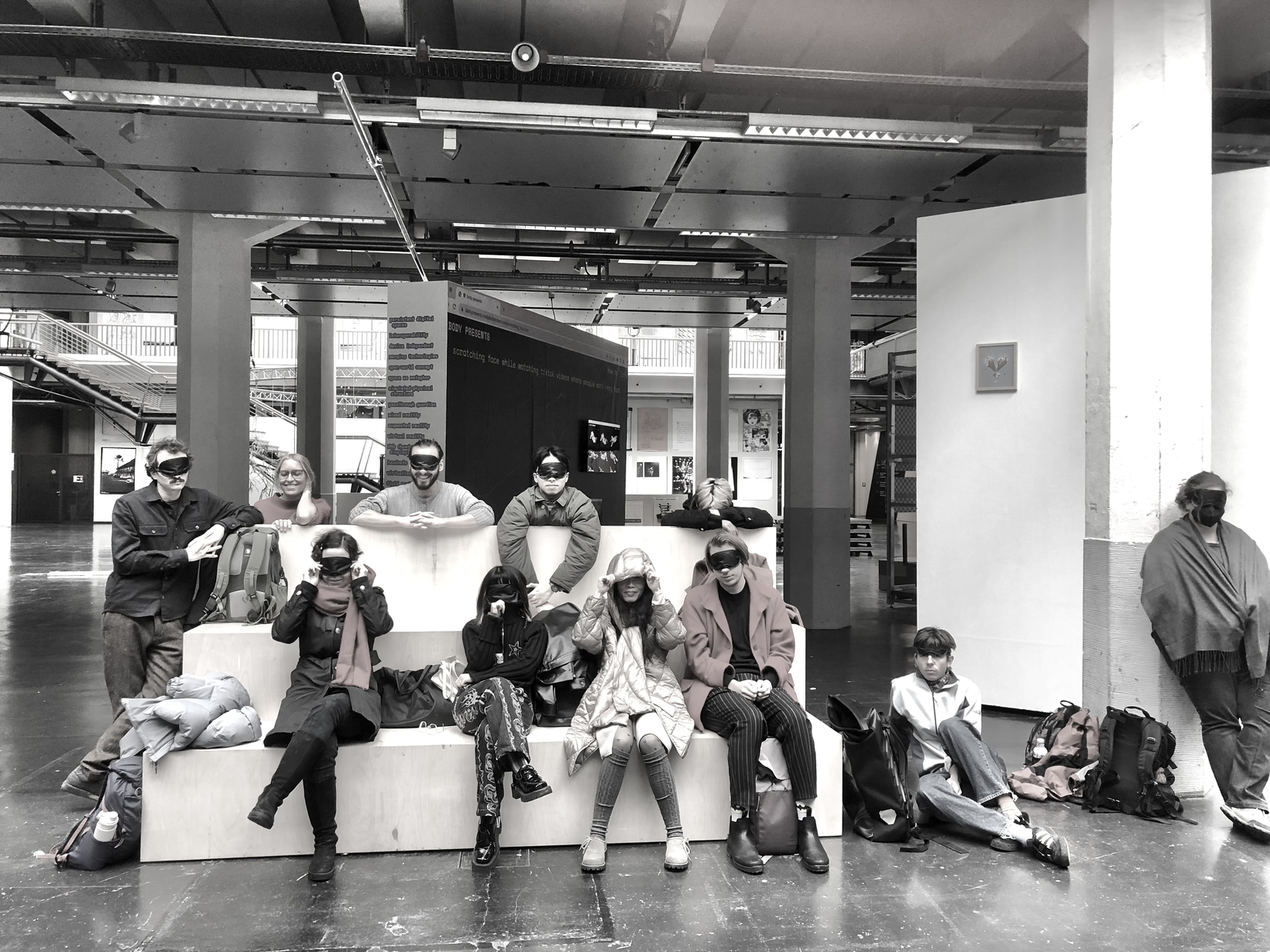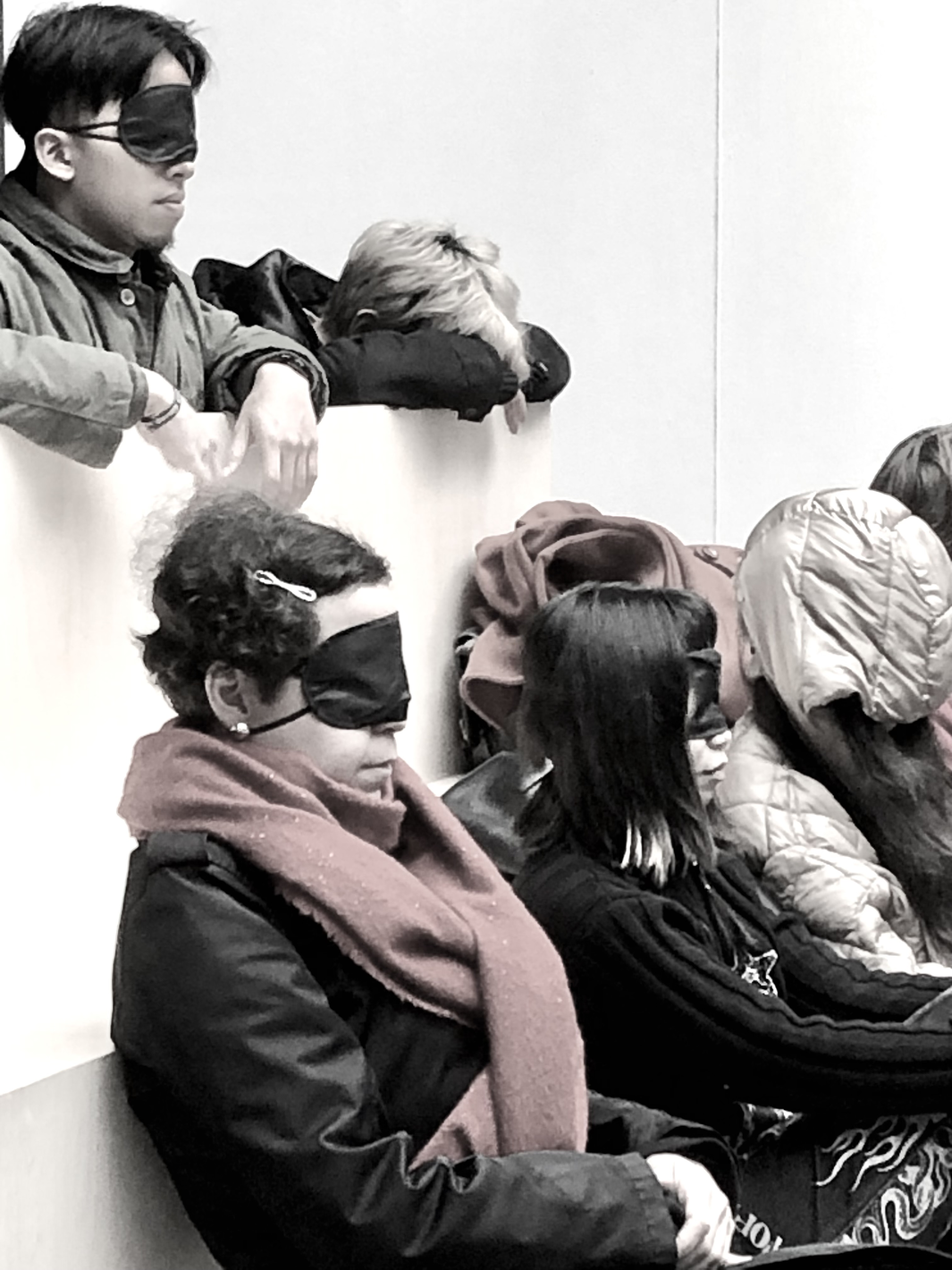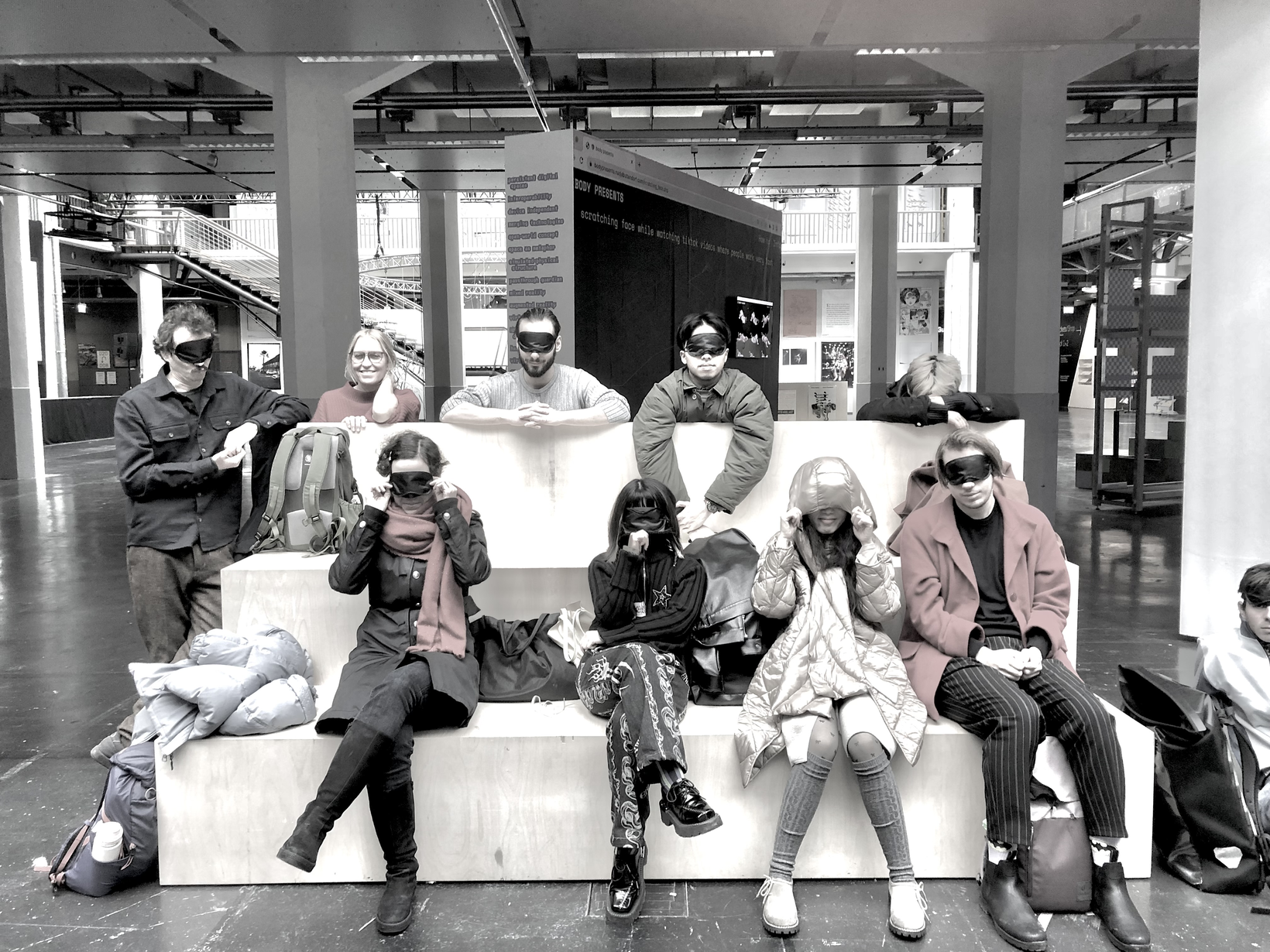Siting Chen
Éva Csonka
Nic Eßer
Kimin Han
Anna-Lina Helsen
Kostantia Jander
Jihye Jang
Seonghyeon Lee
Yun-Wen Liu
Daniel Lythgoe
Paul Modler
Ilja Vincent Morgenstern
Fedor Pliskin
Pavel Polenz
Lorenz Schwarz
Gerriet K. Sharma
Aaron Wagner
Yudong Wang
Eunchae Won
Yerim Yoo
Huiyeon Yun
Rui Zhang
Yunfei Zhang
Sound as a Mediatized Production of Space — Critical Studies, Research, and Strategies in X-Realities
The Phenomenological Shift
According to Goodman[1], worlds are made through processes of eversion that include composition and decomposition; weighting; ordering; deletion and supplementation; and deformation. All these processes could be considered a confrontation with the world and a means whereby to produce alternatives to it. The domain of worldmaking is that of possibility. When we make worlds, we conject the Other. In doing so, we also help shape the world and its trajectory[2].
In recent years, spatial audio technologies such as Ambisonics, Wave Field Synthesis, Dolby Atmos, and Spatial have gained prominence in various fields, including game design, online platforms like YouTube, and major companies such as Apple, Google, Sony, and Facebook. These technologies have also made their way into consumer electronics, event venues, and architectural spaces. It is highly probable that in the near future, artificial auditory environments will become a common part of everyday life, seamlessly blending into the reality of countless individuals.
We have reached an impressive milestone where we can produce aural architectures with a high degree of plausibility, directly inside our heads, without the need for complex tools or the limitations of physical air mediation and built structures.
The process is effortless and intuitive, requiring no special knowledge, intellectual or physical training, or manual dexterity. This marks a significant historical paradigm shift in the way we perceive and shape our auditory experiences. We are now venturing into a post-Euclidean worldmaking era, where everyday encounters transcend traditional spatial constraints and open up new realms of possibility for our auditory senses.
"A paradigm shift is underway; as technological constraints are rolled back, so must conceptual constraints be re-evaluated. Some of these are concerned with what spatiality actually is. Although we think of three-dimensional Euclidean space, it is by no means clear that this is anything other than a conceptual latecomer (however useful)."[3]
While the widespread adoption of spatial audio technology doesn't imply that we will lose our connection to physical reality or that software won't continue to rely on three-dimensional mathematical models, it does signal a significant shift in phenomenology. As these tools become more affordable and accessible, they will undoubtedly impact our bodily experiences and mindsets.
The emerging question is, who creates these environments and with which intentions, and how can music, sound art and architecture contribute with their own strategies to such a reality?
However, to make a (different) world is to know (differently). Shifting perception then is the means by which to critique and question the world. We change the frame, change the perspective, and thereby change our understanding of it.



